-
Your shopping cart is empty!
MENU
Books of the category "DoItYourself", meaning that these books can and will help you increase your creativity, creating unique things on your own and use them in everyday life.
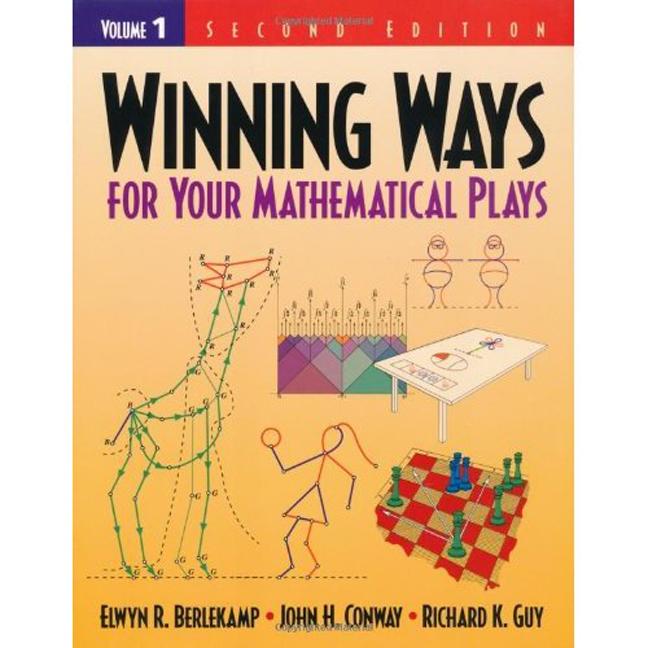
This classic book on games and how to play them intelligently is being re-issued in a new, four volume edition. This book has laid the foundation to a mathematical approach to playing games. The wise authors wield witty words, which wangle wonderfully winning ways. In Volume 1, the authors do the Spade Work, presenting theories and techniques to "dissect" games of varied structures and formats in order to develop winning strategies.
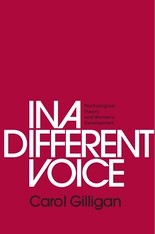
This is the little book that started a revolution, making women’s voices heard, in their own right and with their own integrity, for virtually the first time in social scientific theorizing about women. Its impact was immediate and continues to this day, in the academic world and beyond. Translated into sixteen languages, with more than 700,000 copies sold around the world, In a Different Voice has inspired new research, new educational initiatives, and political debate—and helped many women and men to see themselves and each other in a different light.
Carol Gilligan believes that psychology has persistently and systematically misunderstood women—their motives, their moral commitments, the course of their psychological growth, and their special view of what is important in life. Here she sets out to correct psychology’s misperceptions and refocus its view of female personality. The result is truly a tour de force, which may well reshape much of what psychology now has to say about female experience.
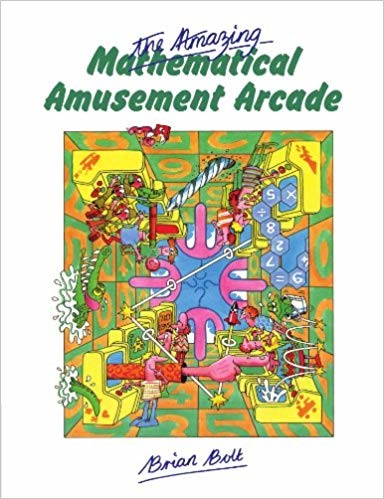
This collection of puzzles, games and activities is designed to stimulate and challenge people of all ages who enjoy puzzles with a mathematical flavour. Many of the puzzles have a long history, while others are original. The subjects vary from matchsticks to magic squares, train shunting to river crossing, and chess to calculators. The second part of the book contains a commentary giving hints and solutions.
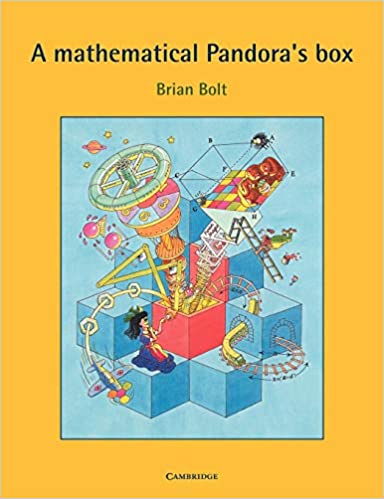
A Mathematical Pandora's Box has been written in response to the success of Brian Bolt's earlier mathematical puzzle books. Through his own experience, the author has discovered a worldwide interest in these and similar puzzles. Not only do they stimulate creative thinking but they can also open up new areas of mathematics to the reader. This book contains 142 activities: in addition to puzzles, there are games, tricks, models and explanations of various phenomena. They range from number manipulation, through happy and amicable numbers, coin puzzles, picnicking bears and pentominoes, to building shapes with cubes. Some of the puzzles date from hundreds of years ago while many others are original, giving everyone something to think about. There is a detailed commentary at the end of the book, giving solutions and explanations, together with the occasional follow-up problem.
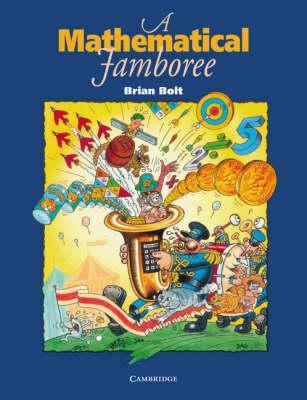
A Mathematical Jamboree follows the very successful puzzle books by the same author. It contains 114 puzzles and activities to challenge people of all ages. There is a detailed commentary at the end of the book, giving solutions and explanations, together with the occasional follow-up problem.
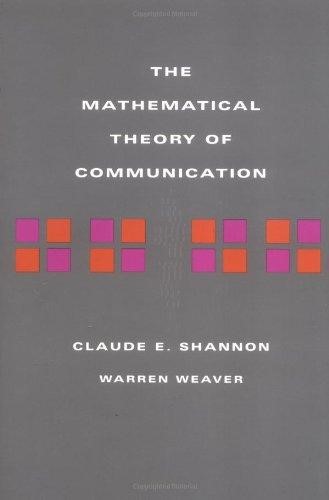
Scientific knowledge grows at a phenomenal pace--but few books have had as lasting an impact or played as important a role in our modern world as The Mathematical Theory of Communication, published originally as a paper on communication theory in the Bell System Technical Journal more than fifty years ago. Republished in book form shortly thereafter, it has since gone through four hardcover and sixteen paperback printings. It is a revolutionary work, astounding in its foresight and contemporaneity. The University of Illinois Press is pleased and honored to issue this commemorative reprinting of a classic.
"synopsis" may belong to another edition of this title.
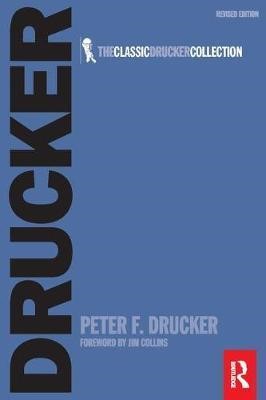
The measure of the executive, Peter Drucker reminds us, is the ability to 'get the right things done'. Usually this involves doing what other people have overlooked, as well as avoiding what is unproductive.
He identifies five talents as essential to effectiveness, and these can be learned; in fact, they must be learned just as scales must be mastered by every piano student regardless of his natural gifts. Intelligence, imagination and knowledge may all be wasted in an executive job without the acquired habits of mind that convert these into results.
One of the talents is the management of time. Another is choosing what to contribute to the particular organization. A third is knowing where and how to apply your strength to best effect. Fourth is setting up the right priorities. And all of them must be knitted together by effective decision-making.
How these can be developed forms the main body of the book. The author ranges widely through the annals of business and government to demonstrate the distinctive skill of the executive. He turns familiar experience upside down to see it in new perspective. The book is full of surprises, with its fresh insights into old and seemingly trite situations.
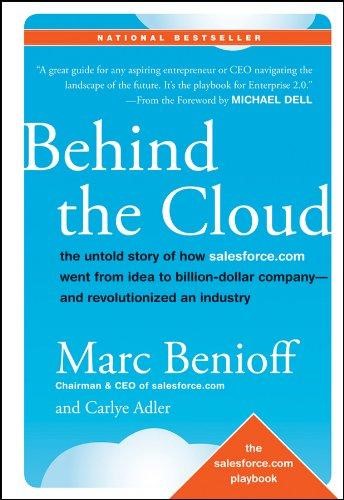
How did salesforce.com grow from a start up in a rented apartment into the world's fastest growing software company in less than a decade? For the first time, Marc Benioff, the visionary founder, chairman and CEO of salesforce.com, tells how he and his team created and used new business, technology, and philanthropic models tailored to this time of extraordinary change. Showing how salesforce.com not only survived the dotcom implosion of 2001, but went on to define itself as the leader of the cloud computing revolution and spark a $46-billion dollar industry, Benioff's story will help business leaders and entrepreneurs stand out, innovate better, and grow faster in any economic climate.
In Behind the Cloud, Benioff shares the strategies that have inspired employees, turned customers into evangelists, leveraged an ecosystem of partners, and allowed innovation to flourish.
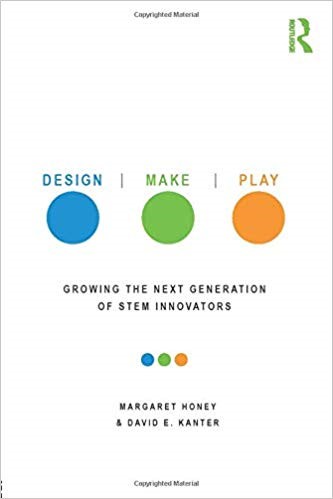
Design, Make, Play: Growing the Next Generation of STEM Innovators is a resource for practitioners, policymakers, researchers and program developers that illuminates creative, cutting edge ways to inspire and motivate young people about science and technology learning. The book is aligned with the National Research Council’s new Framework for Science Education, which includes an explicit focus on engineering and design content, as well as integration across disciplines. Extensive case studies explore real world examples of innovative programs that take place in a variety of settings, including schools, museums, community centers, and virtual spaces. Design, Make, and Play are presented as learning methodologies that have the power to rekindle children’s intrinsic motivation and innate curiosity about STEM (science, technology, engineering, and mathematics) fields. A digital companion app showcases rich multimedia that brings the stories and successes of each program―and the students who learn there―to life.
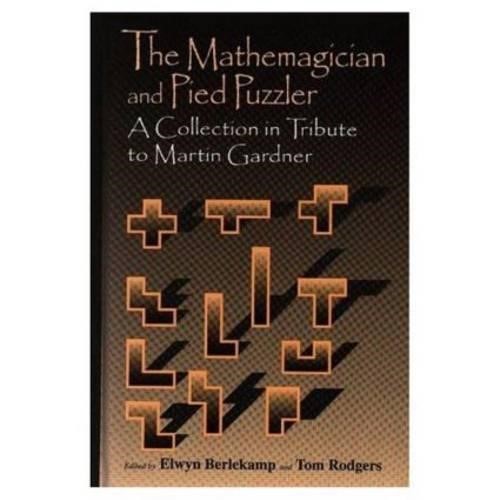
This volume comprises an imaginative collection of pieces created in tribute to Martin Gardner. Perhaps best known for writing Scientific American's "Mathematical Games" column for years, Gardner used his personal exuberance and fascination with puzzles and magic to entice a wide range of readers into a world of mathematical discovery. This tribute therefore contains pieces as widely varied as Gardner's own interests, ranging from limericks to lengthy treatises, from mathematical journal articles to personal stories. This book makes a charming and unusual addition to any personal library. Selected papers: - The Odyssey of the Figure Eight Puzzle by Stewart Coffin - Block-Packing Jambalaya by Bill Cutler - O'Beirne's Hexiamond by Richard K. Guy - Biblical Ladders by Donald E. Knuth - Three Limericks: On Space, Time and Speed by Tim Rowett.

"If you are determined to encourage creativity and provide a collaborative environment that will bring out the best in people, you will want this book by your side at all times." --Bill Moggridge, Director of the Smithsonian's Cooper-Hewitt National Design Museum
"Make Space is an articulate account about the importance of space; how we think about it, build it and thrive in it." --James P. Hackett, President and CEO, Steelcase
An inspiring guidebook filled with ways to alter space to fuel creative work and foster collaboration.
Based on the work at the Stanford University d.school and its Environments Collaborative Initiative, Make Space is a tool that shows how space can be intentionally manipulated to ignite creativity. Appropriate for designers charged with creating new spaces or anyone interested in revamping an existing space, this guide offers novel and non-obvious strategies for changing surroundings specifically to enhance the ways in which teams and individuals communicate, work, play--and innovate.
Inside are:
Tools--tips on how to build everything from furniture, to wall treatments, and rigging
Situations--scenarios, and layouts for sparking creative activities
Insights--bite-sized lessons designed to shortcut your learning curve
Space Studies--candid stories with lessons on creating spaces for making, learning, imagining, and connecting
Design Template--a framework for understanding, planning, and building collaborative environments
Make Space is a new and dynamic resource for activating creativity, communication and innovation across institutions, corporations, teams, and schools alike. Filled with tips and instructions that can be approached from a wide variety of angles, Make Space is a ready resource for empowering anyone to take control of an environment.

Introduction. Reconsideration of Basic Motor and Generator Action. The Classic DC Motors. The Classic AC Motors. Electronic Control of Communicator. Type Machines. Electronic Control of Noncommutator Machines. Control Applications for a Variety of Electric Motors. The Non-Classic Motors. The Electric Vehicle: Mirage or Reality?

ARDUINO CAN TAKE YOU ANYWHERE. THIS BOOK IS THE ROADMAP.
Exploring Arduino shows how to use the world’s mostpopular microcontroller to create cool, practical, artistic, andeducational projects. Through lessons in electrical engineering,programming, and human computer interaction, this book walks youthrough specific, increasingly complex projects, all the whileproviding best practices that can apply to your own projects onceyou’ve mastered these. You’ll acquire valuable skills– and have a whole lot of fun.
• Explore the features of several commonly used Arduinoboards
• Use the Arduino to control very simple tasks orcomplex electronics
• Learn principles of system design, programming, andelectrical engineering
• Discover code snippets, best practices, and systemschematics you can apply to your original projects
• Master skills you can use for engineering endeavors inother fields and with different platforms
Find schematics, tutorial videos, code download, and more at thecompanion website: www.exploringarduino.com.
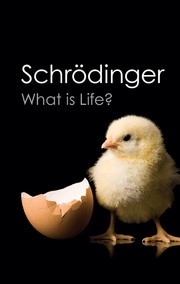
Nobel laureate Erwin Schrödinger's What is Life? is one of the great science classics of the twentieth century. It was written for the layman, but proved to be one of the spurs to the birth of molecular biology and the subsequent discovery of DNA. What is Life? appears here together with Mind and Matter, his essay investigating a relationship which has eluded and puzzled philosophers since the earliest times. Brought together with these two classics are Schrödinger's autobiographical sketches, which offer a fascinating account of his life as a background to his scientific writings.